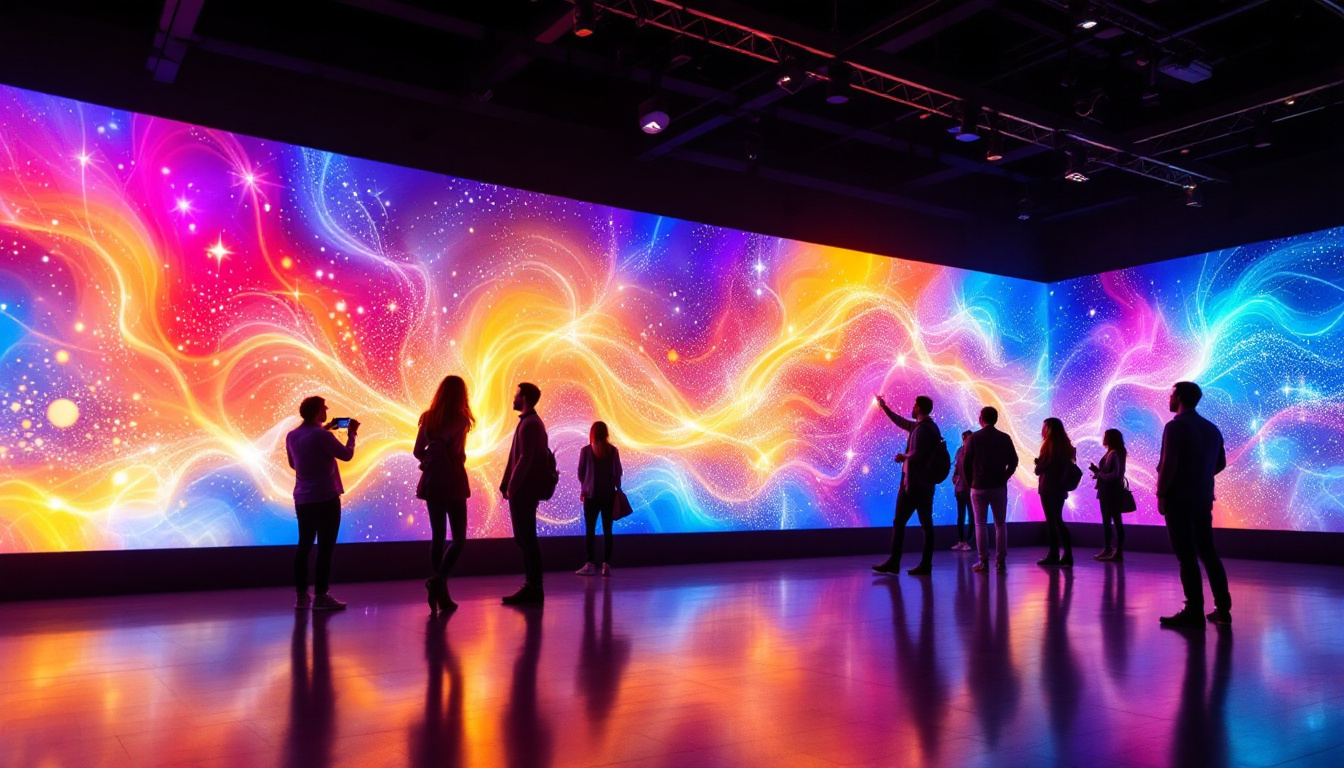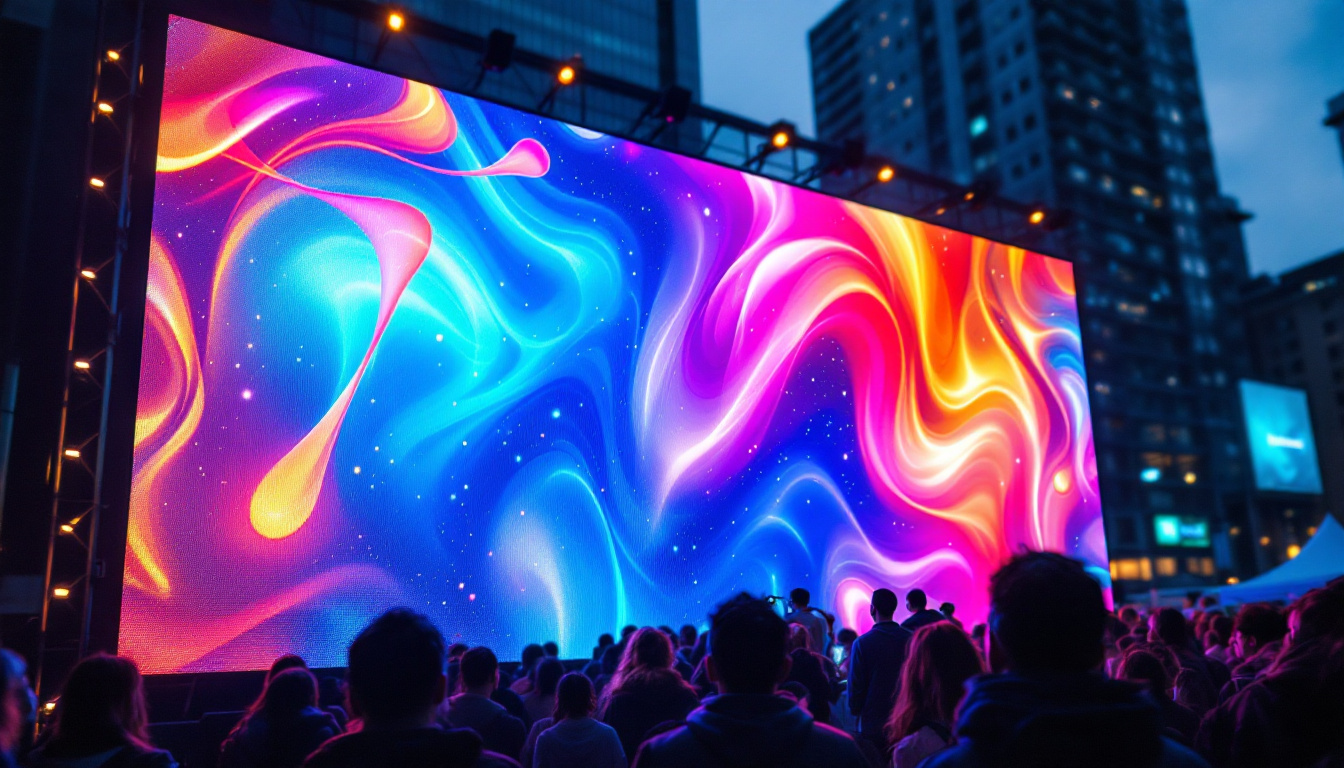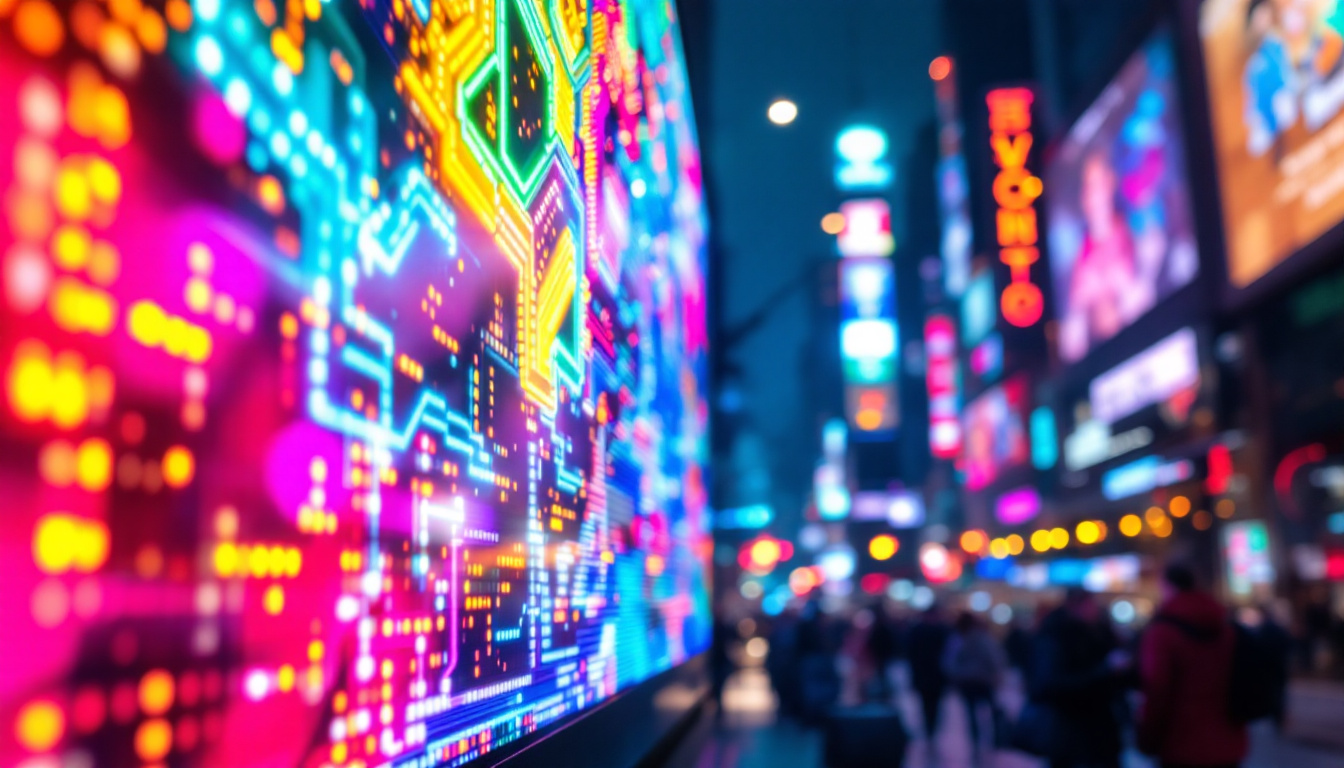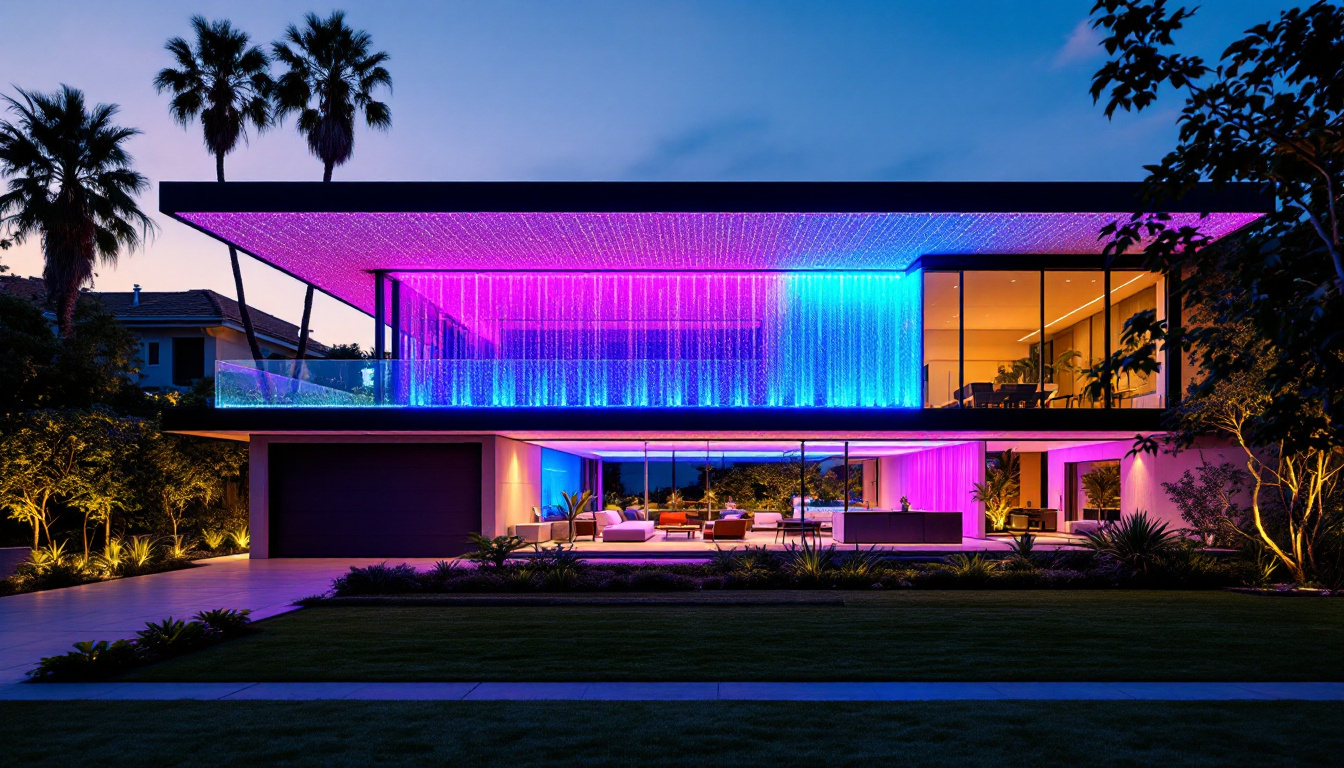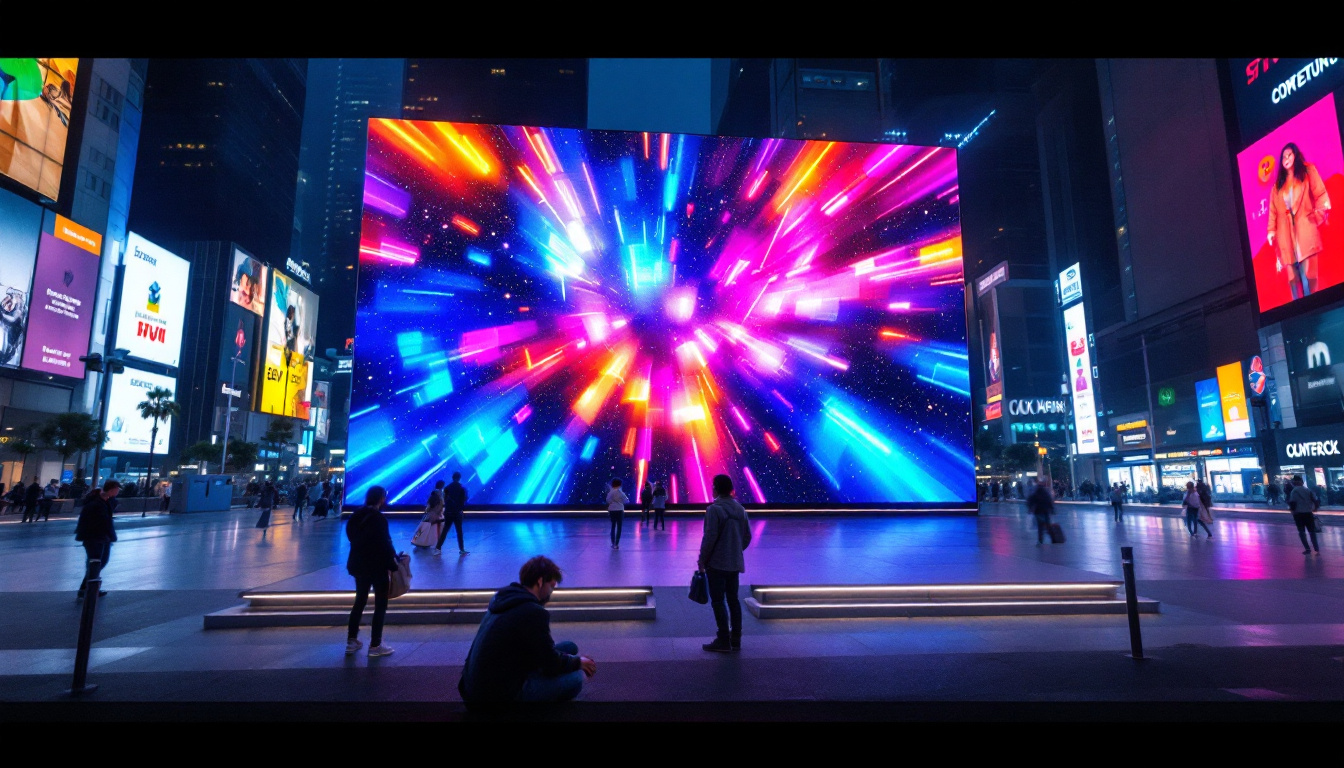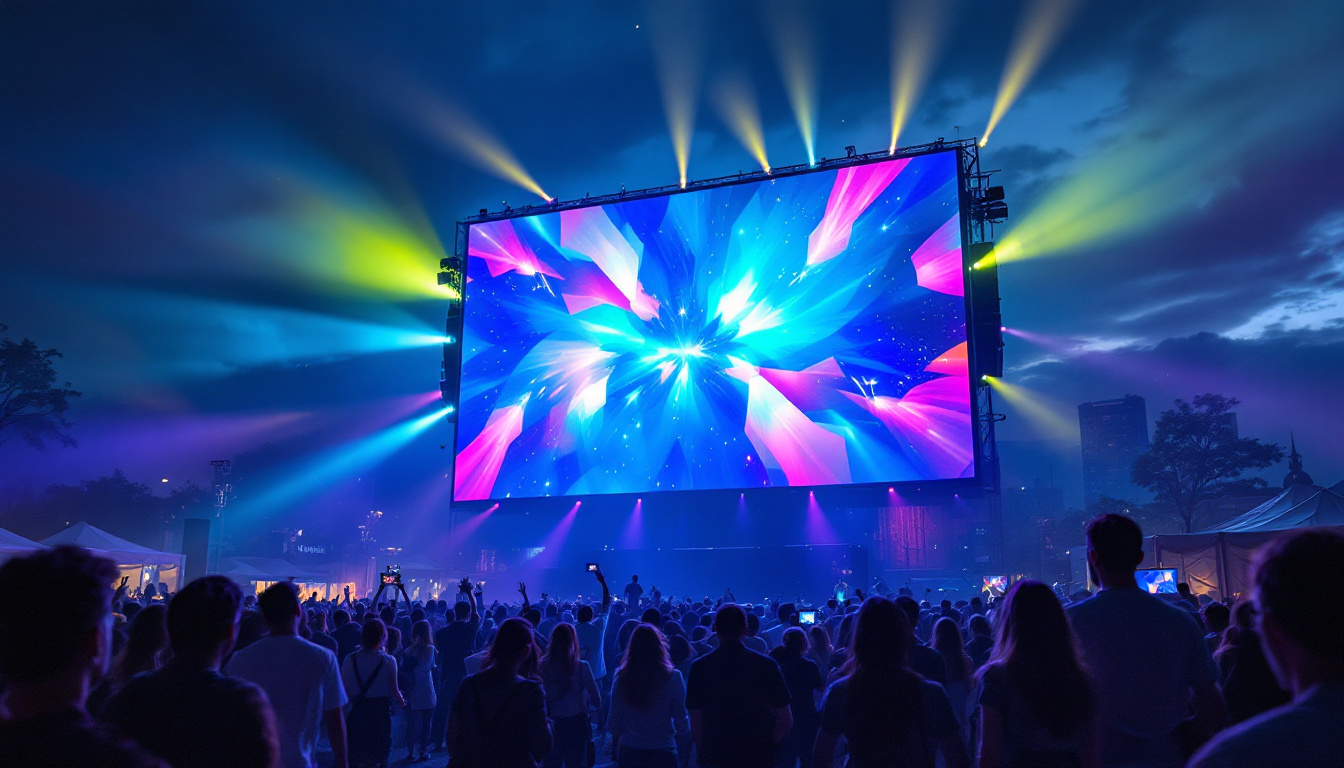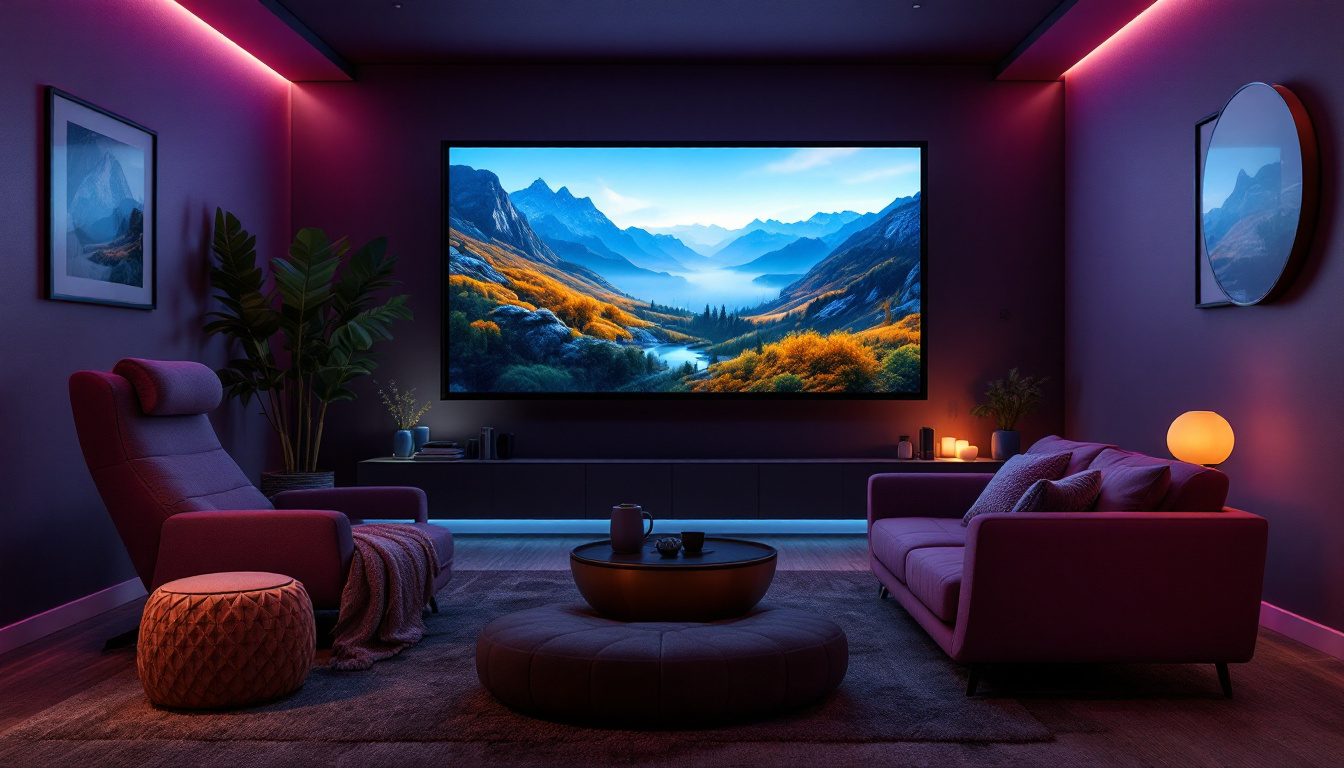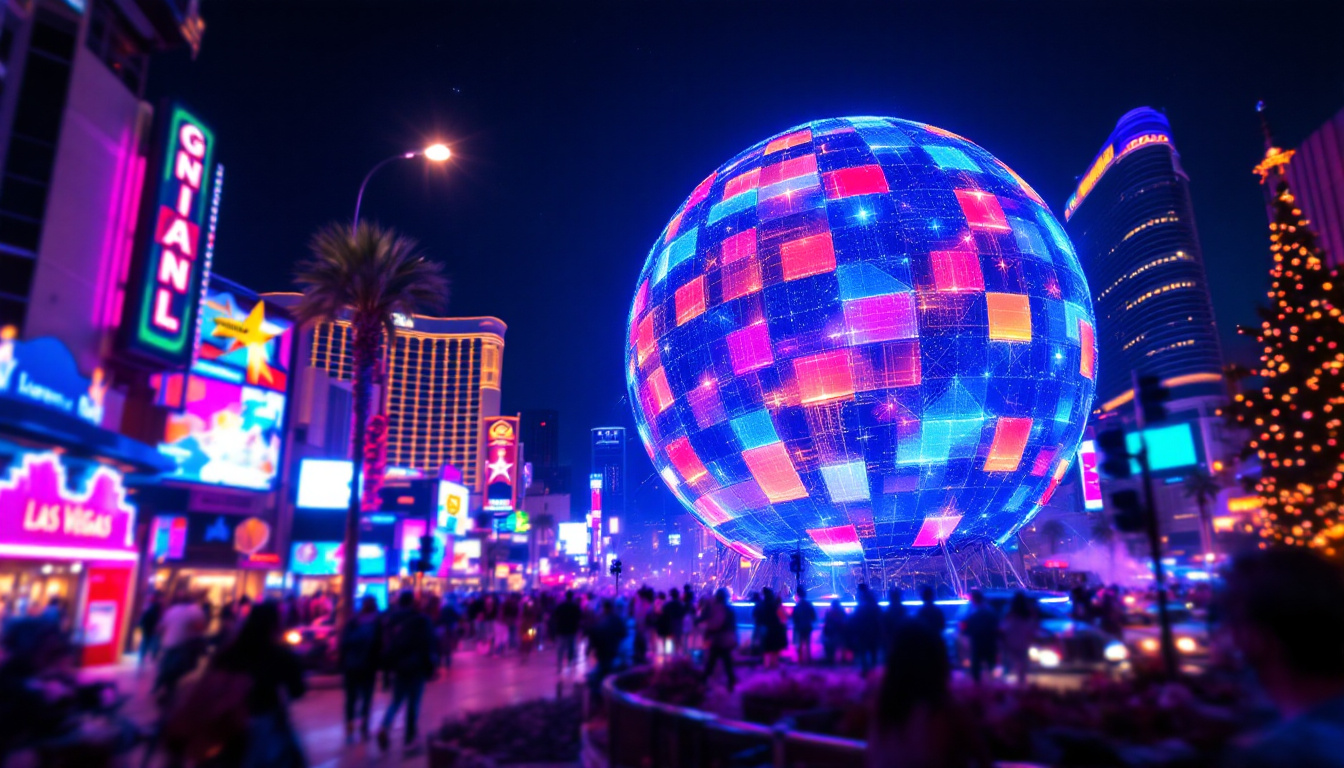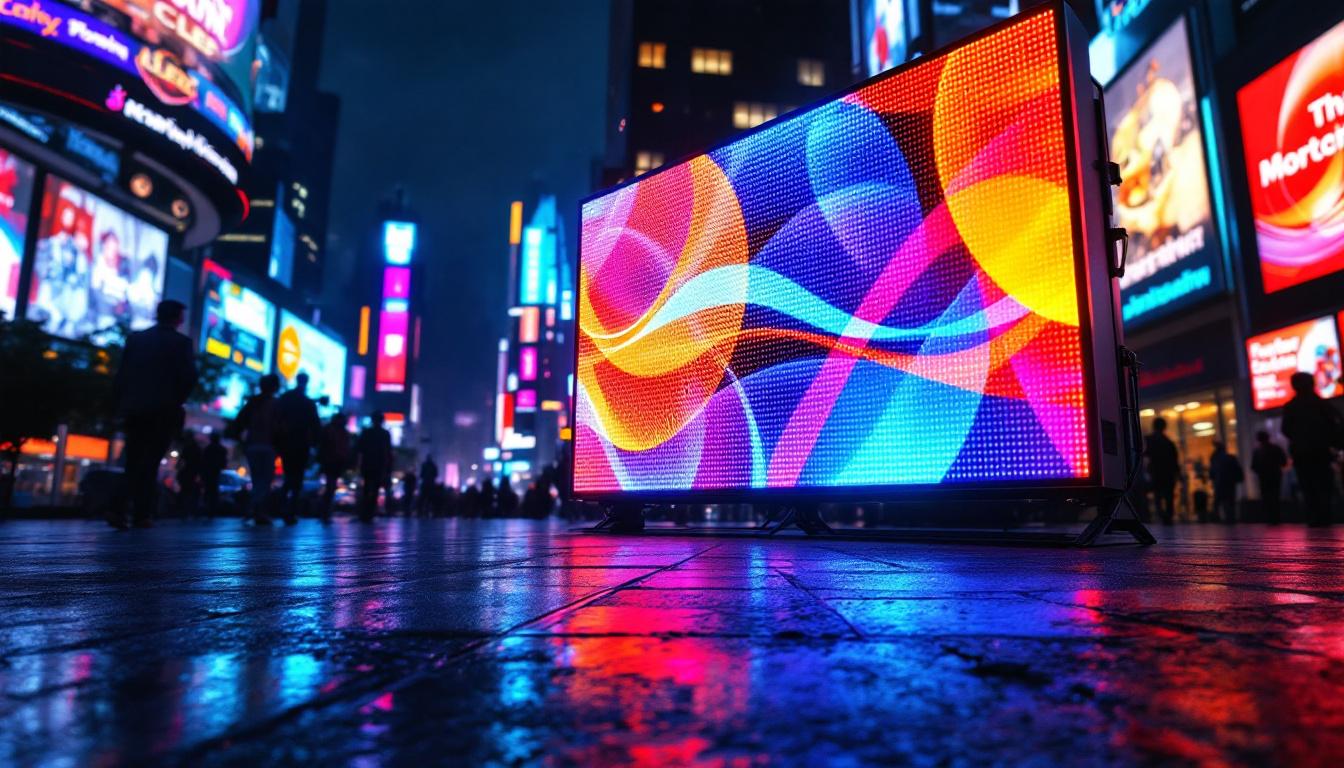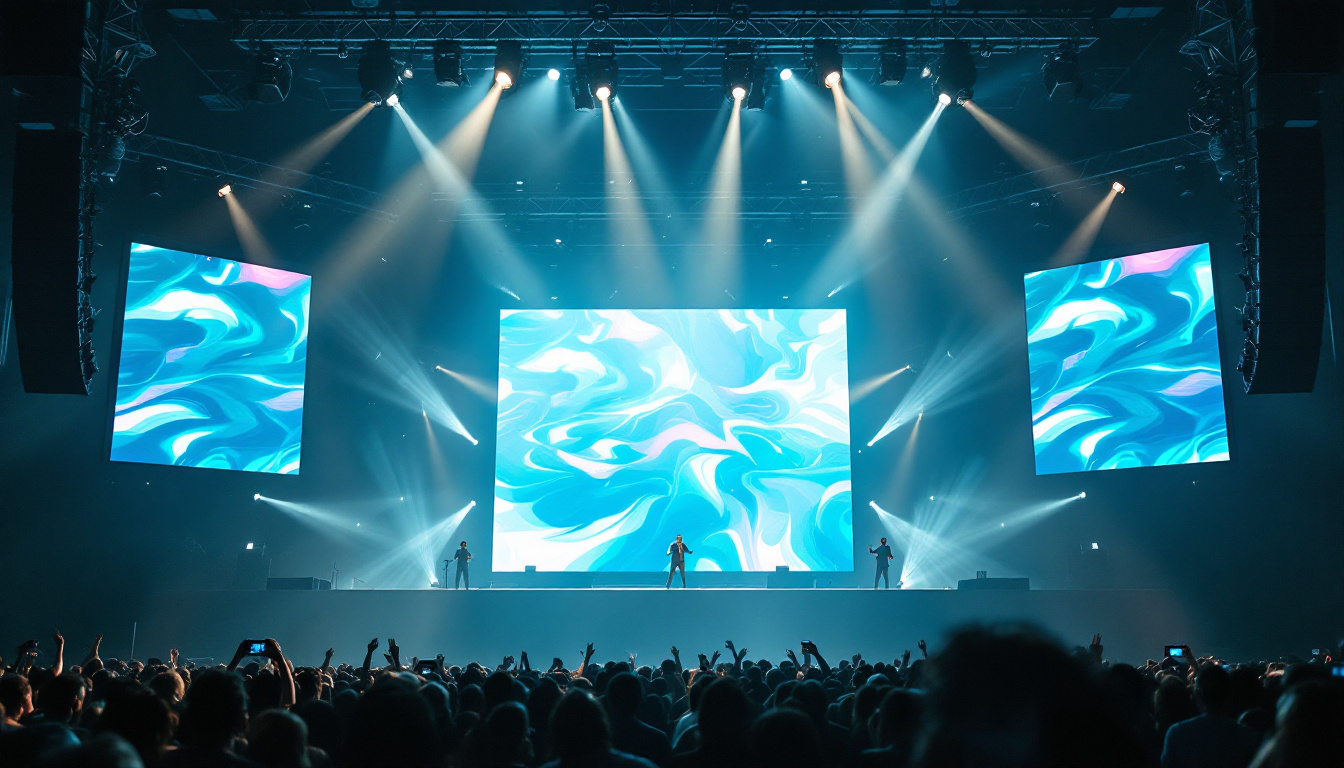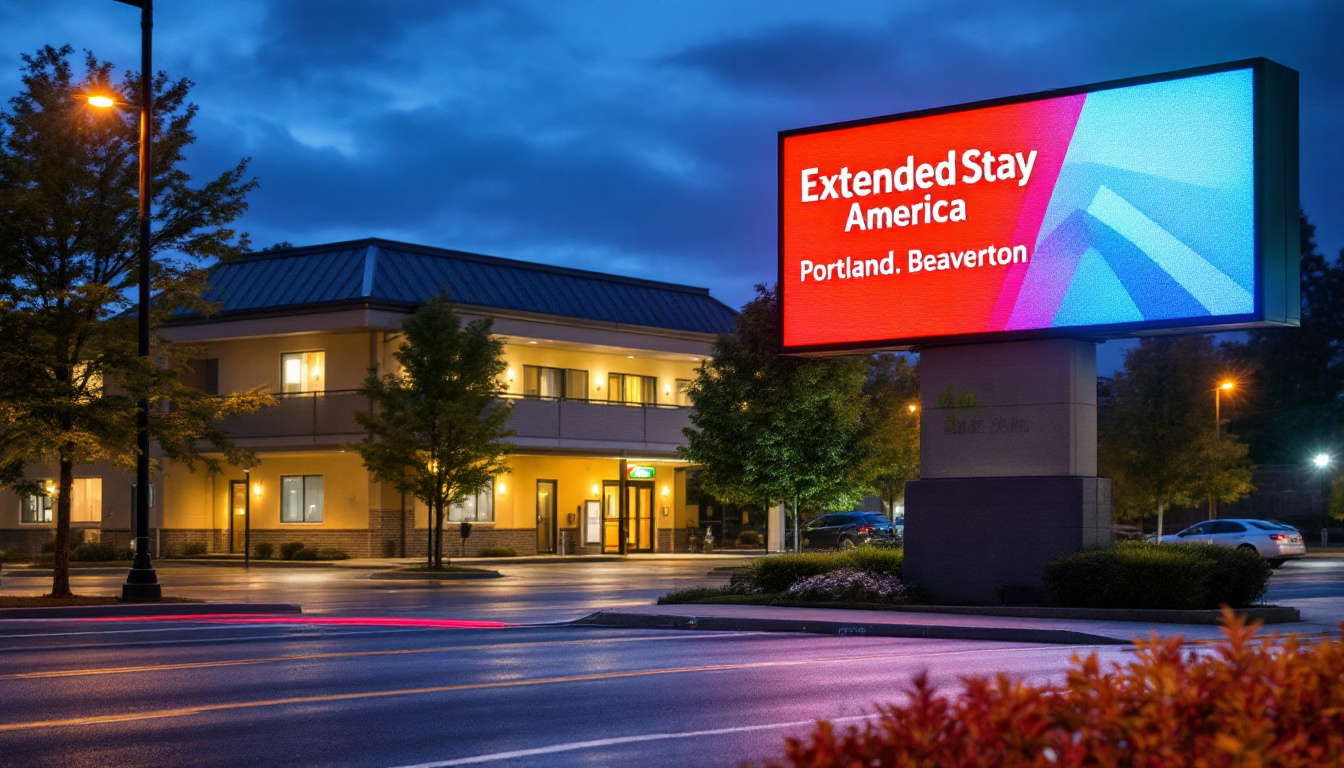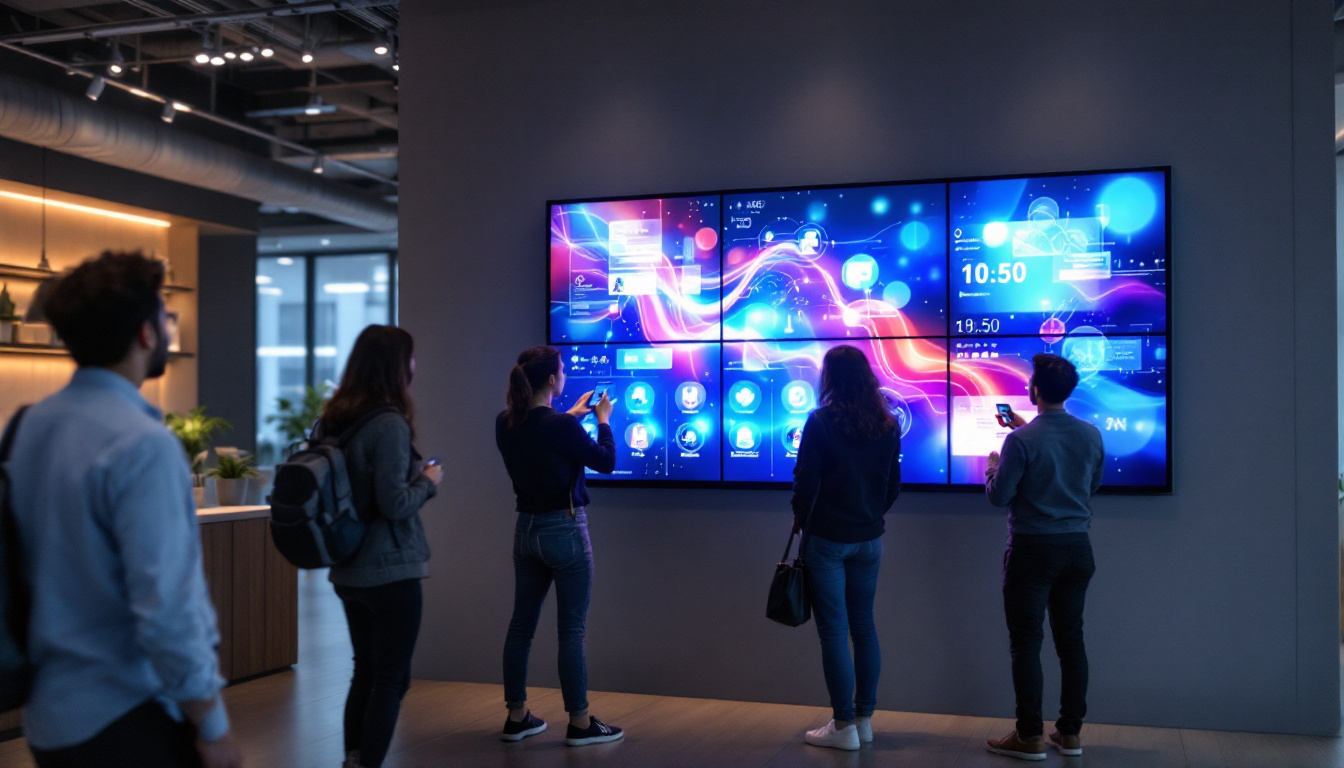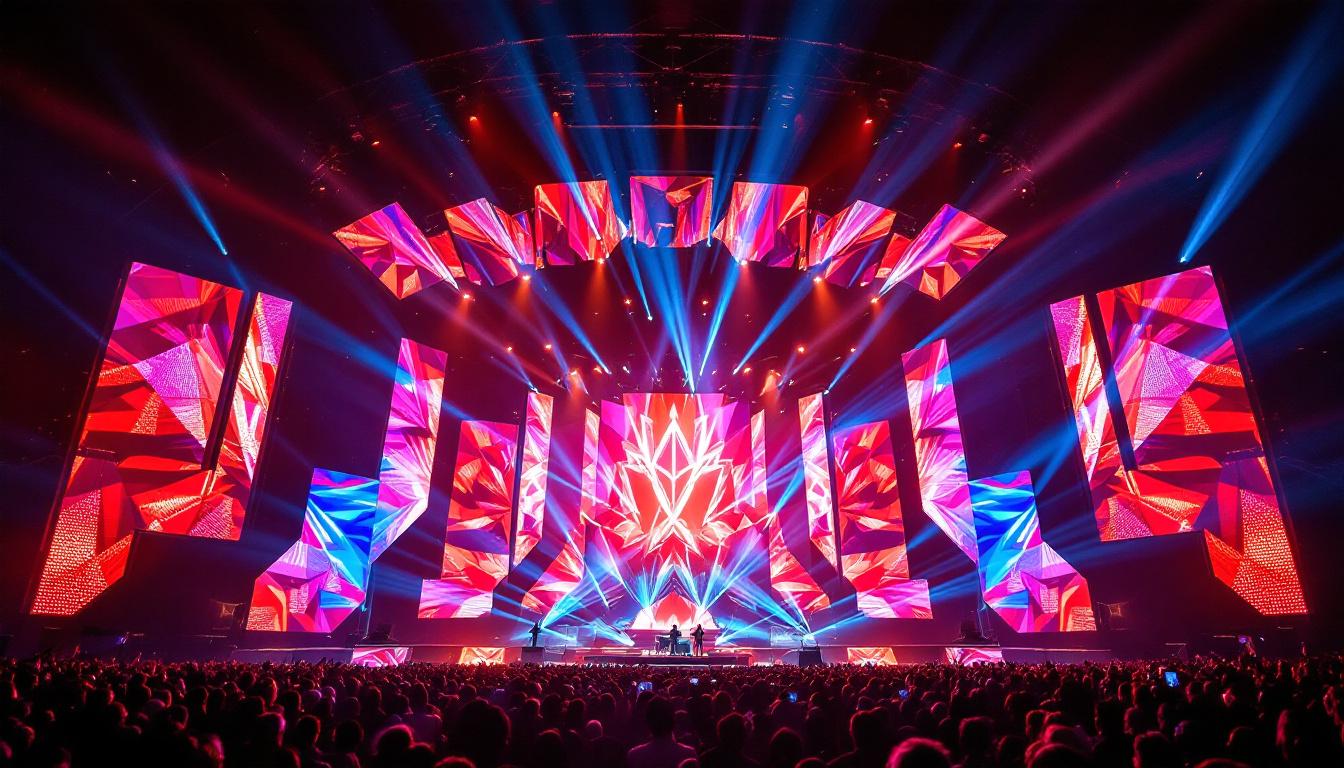The evolution of display technology has reached new heights with the introduction of cloud LED light walls. These innovative systems have transformed the way information is presented, enhancing visual experiences in various settings, from commercial spaces to art installations. This article delves into the intricacies of cloud LED light walls, exploring their components, functionalities, and the myriad of applications they serve.
Understanding LED Display Technology
LED (Light Emitting Diode) displays have become a cornerstone of modern visual technology. Their ability to produce vibrant colors and high contrast ratios makes them ideal for a wide range of applications.
What is an LED Display?
An LED display is a flat panel display that uses an array of light-emitting diodes to create images and videos. Unlike traditional display technologies, such as LCD or CRT, LED displays offer superior brightness and energy efficiency. They are commonly used in televisions, billboards, and digital signage.
The fundamental operation of an LED display involves the manipulation of light. Each pixel in an LED display is made up of red, green, and blue diodes, which can be combined in various intensities to produce a full spectrum of colors. This capability allows for stunning visuals that can capture attention and convey messages effectively. Furthermore, the rapid response time of LED technology enables smooth motion rendering, making it particularly advantageous for displaying fast-paced video content, such as sports or action films. This responsiveness, combined with the ability to maintain high levels of brightness even in well-lit environments, makes LED displays a preferred choice for both consumers and advertisers alike.
Types of LED Displays
There are several types of LED displays, each designed for specific applications. The most common types include:
- Direct View LED: These displays are made up of individual LED modules that are directly visible to the viewer. They are often used in large outdoor screens and indoor video walls.
- LED Backlit LCD: This type combines traditional LCD technology with LED backlighting, enhancing brightness and color accuracy.
- Organic LED (OLED): OLED displays use organic compounds to emit light, providing deeper blacks and wider viewing angles.
In addition to these common types, there are also specialized LED displays designed for niche markets. For instance, Mini LED technology utilizes smaller LEDs to create more precise control over local dimming, resulting in improved contrast and color performance. This innovation is particularly beneficial for high-end televisions and monitors, where picture quality is paramount. Another emerging trend is MicroLED technology, which employs microscopic LEDs to form individual pixels, offering the potential for even greater brightness and energy efficiency while eliminating the need for backlighting altogether. As technology continues to evolve, these advanced LED display types are set to redefine the standards for visual experiences across various industries.
The Concept of Cloud LED Light Walls
Cloud LED light walls represent a significant advancement in LED display technology, integrating cloud computing capabilities to enhance functionality and user experience. This innovative approach allows for dynamic content management and real-time updates.
What is a Cloud LED Light Wall?
A cloud LED light wall is a large-scale display system that leverages cloud technology to deliver content. These systems can be controlled remotely, allowing for seamless updates and changes to the displayed information. This is particularly beneficial for businesses that require frequent updates, such as advertising agencies and event organizers.
By utilizing cloud infrastructure, these displays can pull content from various sources, including social media feeds, live data streams, and remote servers. This flexibility enables organizations to maintain relevance and engage their audience effectively.
Key Components of Cloud LED Light Walls
Cloud LED light walls consist of several critical components that work together to create a cohesive display system. These include:
- LED Modules: The building blocks of the display, these modules contain the individual LEDs that produce the images.
- control system: This system manages the content displayed on the LED wall, allowing for real-time updates and scheduling.
- Cloud Infrastructure: The backbone of the system, enabling remote access and content management through the internet.
Benefits of Cloud LED Light Walls
The integration of cloud technology into LED displays offers numerous advantages, making them an appealing choice for various applications.
Enhanced Flexibility and Scalability
One of the primary benefits of cloud LED light walls is their flexibility. Organizations can easily scale their displays to accommodate different sizes and configurations. Whether a small retail space or a large stadium, cloud LED light walls can be tailored to meet specific needs.
Furthermore, the ability to update content remotely means that businesses can respond quickly to changing circumstances, such as promotions or news events. This agility is invaluable in today’s fast-paced environment.
Improved Content Management
Cloud LED light walls offer sophisticated content management capabilities. Users can schedule content in advance, ensuring that the right message is delivered at the right time. Additionally, the integration of analytics tools allows organizations to assess the effectiveness of their displays, optimizing content for maximum engagement.
This data-driven approach helps businesses understand their audience better, enabling them to tailor messages that resonate with viewers. By leveraging insights from viewer interactions, organizations can refine their strategies for improved outcomes.
Applications of Cloud LED Light Walls
The versatility of cloud LED light walls has led to their adoption across various sectors. Their ability to deliver engaging content makes them suitable for numerous applications.
Retail Environments
In retail settings, cloud LED light walls can enhance the shopping experience by showcasing promotions, product information, and interactive content. These displays can capture customer attention and drive sales by creating an immersive atmosphere.
For instance, a clothing store might use a cloud LED light wall to display a fashion show, allowing customers to see how different outfits look in motion. This interactive approach can significantly influence purchasing decisions.
Corporate Communications
Businesses are increasingly utilizing cloud LED light walls for internal communications and presentations. These displays can be used in conference rooms, lobbies, and common areas to share important information, updates, and announcements.
By integrating real-time data feeds, companies can keep employees informed about key metrics, project statuses, and company news. This transparency fosters a culture of engagement and collaboration within the organization.
Entertainment and Events
Cloud LED light walls have become a staple in the entertainment industry, used in concerts, festivals, and sporting events. Their ability to create stunning visuals enhances the overall experience for attendees.
For example, during a live concert, a cloud LED light wall can display dynamic visuals that sync with the music, creating an unforgettable atmosphere. Additionally, event organizers can use these displays to provide real-time updates, such as schedules and artist information, keeping the audience engaged throughout the event.
Challenges and Considerations
While cloud LED light walls offer numerous benefits, there are also challenges and considerations that organizations must address when implementing this technology.
Initial Investment Costs
The initial investment for cloud LED light walls can be significant. The cost of high-quality LED modules, control systems, and cloud infrastructure can deter some organizations from adopting this technology. However, it is essential to consider the long-term benefits and potential return on investment.
Organizations should conduct a thorough cost-benefit analysis to determine whether the advantages of enhanced engagement and improved content management outweigh the initial expenses. In many cases, the increased customer interaction and sales can justify the investment.
Technical Expertise
Implementing and managing cloud LED light walls requires a certain level of technical expertise. Organizations may need to invest in training or hire skilled personnel to ensure that the system operates smoothly.
Additionally, ongoing maintenance and updates are crucial to keep the system functioning optimally. Businesses should allocate resources for technical support to address any issues that may arise.
The Future of Cloud LED Light Walls
As technology continues to advance, the future of cloud LED light walls looks promising. Innovations in LED technology, cloud computing, and content management systems will likely enhance the capabilities of these displays.
Integration with Augmented and Virtual Reality
One exciting prospect for cloud LED light walls is their potential integration with augmented reality (AR) and virtual reality (VR). This combination could create immersive experiences that engage viewers on a whole new level.
Imagine a retail environment where customers can use AR to see how furniture looks in their homes, with the cloud LED light wall displaying additional information and options. Such applications could revolutionize the way consumers interact with products and brands.
Advancements in Energy Efficiency
As sustainability becomes increasingly important, advancements in energy-efficient technologies for LED displays are expected. Future cloud LED light walls may utilize even less power while delivering brighter and more vibrant visuals.
These developments will not only reduce operational costs for organizations but also contribute to a more sustainable future, aligning with the growing emphasis on environmental responsibility.
Conclusion
Cloud LED light walls represent a significant leap forward in display technology, combining the brilliance of LED displays with the flexibility of cloud computing. Their applications span various industries, offering businesses the ability to engage audiences in innovative ways.
While challenges such as initial costs and technical expertise exist, the benefits of enhanced content management, scalability, and dynamic engagement make cloud LED light walls a compelling choice for organizations looking to elevate their visual communication strategies.
As technology continues to evolve, the future of cloud LED light walls promises even greater possibilities, paving the way for immersive experiences that captivate and inspire. Embracing this technology could very well be the key to staying ahead in an increasingly competitive landscape.
Discover LumenMatrix LED Display Solutions
Ready to transform your space with the latest in LED display technology? LumenMatrix is at the forefront of creating immersive visual experiences that captivate and engage. From vibrant Indoor and Outdoor LED Wall Displays to innovative solutions like Vehicle LED Displays, LED Posters, and LED Sports Displays, we have the technology to bring your vision to life. Our mission is to revolutionize visual communication, ensuring your message resonates with clarity and impact. Don’t just stay ahead of the curve—define it with LumenMatrix. Check out LumenMatrix LED Display Solutions today and see how we can illuminate your brand’s potential.

